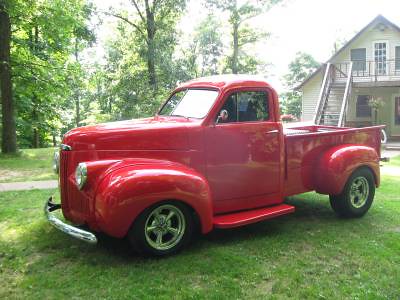289 engine is getting hot when just idling.
I bought this NOS thermostat from SI before I rebuilt this engine because the car didn't have a thermostat in it. When I installed it, the thing ran hot. So I removed it and assumed the heating was due to the damage and corrosion in that old block, and the radiator didn't look very clean either.
Now I install the same thermostat into a different engine that I just finished rebuilding. I also had the radiator cleaned at the local radiator shop. After I solved the oil pressure problem I let the car run for a while to make sure everything was OK. The temperature never stopped climbing and I couldn't see any flow turbulence when looking into the top radiator tank. Coolant was sitting still like it was in a mud hole. I turned the engine off at 200 degrees on the gauge.
I pulled the thermostat and brought it to the lab guys at my work so they could test it. It is supposed to be a 170 degree thermostat according to the markings but it never cracked until it got to 182. The photo below shows how much it was open at 208. I have never had to test a thermostat before so I don't know if this is considered full open or not.

Is this as open as it gets or do I need another thermostat?
Thanks
Wayne
I bought this NOS thermostat from SI before I rebuilt this engine because the car didn't have a thermostat in it. When I installed it, the thing ran hot. So I removed it and assumed the heating was due to the damage and corrosion in that old block, and the radiator didn't look very clean either.
Now I install the same thermostat into a different engine that I just finished rebuilding. I also had the radiator cleaned at the local radiator shop. After I solved the oil pressure problem I let the car run for a while to make sure everything was OK. The temperature never stopped climbing and I couldn't see any flow turbulence when looking into the top radiator tank. Coolant was sitting still like it was in a mud hole. I turned the engine off at 200 degrees on the gauge.
I pulled the thermostat and brought it to the lab guys at my work so they could test it. It is supposed to be a 170 degree thermostat according to the markings but it never cracked until it got to 182. The photo below shows how much it was open at 208. I have never had to test a thermostat before so I don't know if this is considered full open or not.

Is this as open as it gets or do I need another thermostat?
Thanks
Wayne




Comment